There is a wide range of ecosystems under which rice is grown on different soil types and in various climatic and hydrological conditions ranging from waterlogged and poorly drained situations to well-drained conditions. About 6.0 million hectares of upland rice are grown in well-drained soils where moisture stress and blast are the most significant constraints regarding rice production.
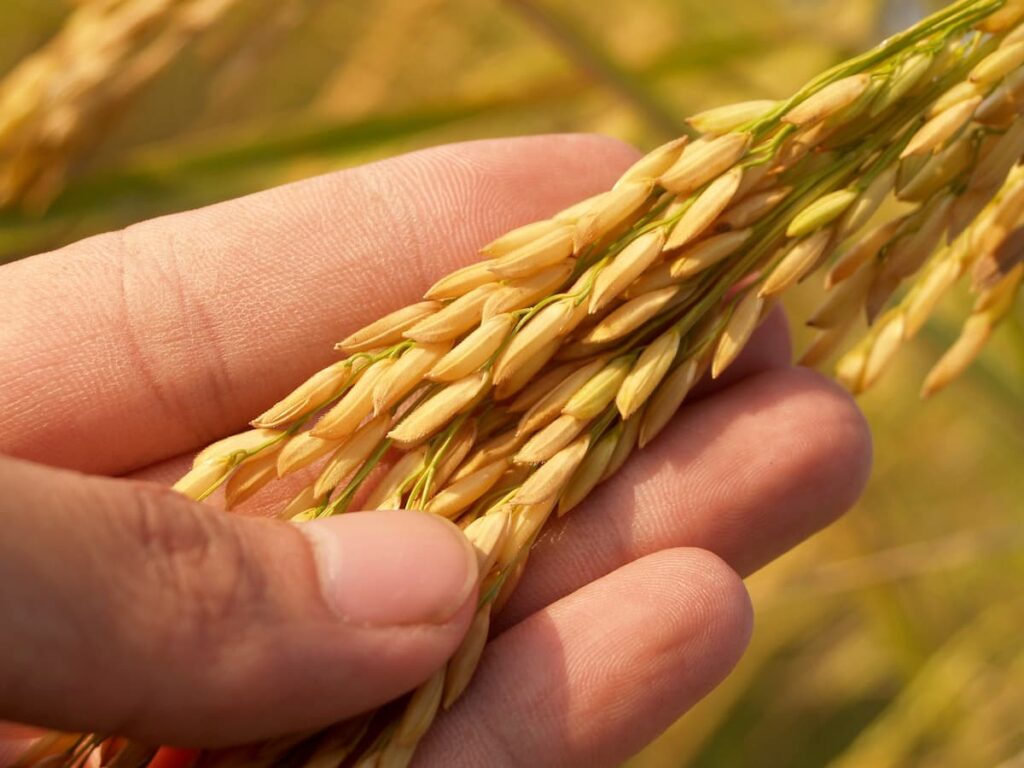
Based on the rainfall pattern and the topography of the soil, early maturing varieties of 80 to 110 days are grown in certain areas. Typically, rice varieties of 140 to 145 days duration to photosensitive types are grown in eastern India, where soil moisture is available for a more extended period, and they are harvested between mid-November and mid-December. Depending on the rain-fed lowlands, the depth of the water varies.
A shallow water layer might be only 25 cm deep, while a medium-deep water layer might be 50 cm deep. In Eastern India, deepwater rice is grown in areas where the water depth is greater than 50 cm and goes up to 2 meters. There are around 4 million acres under cultivation in areas of deepwater rice. As a result of the lower productivity of deep water rice, a large portion of the deep water rice area has been converted to dry season rice.
High yield hybrid paddy/rice varieties in India
States cultivating Paddy in India
West Bengal is the nation’s top producer of rice production. It is followed by Uttar Pradesh, Telangana, Andhra Pradesh, Punjab, Orissa, Bihar, Chhattisgarh, Tamil Nadu, Assam, and Haryana. A lot of water and labor are required to cultivate rice. Due to this reason, rice cultivation is primarily carried out in places where labor costs are low, and rainfall levels are excellent.
Hybrid seed varieties in Paddy
| Rice Hybrids | Duration (Days) | Yield (Tons/Acre) | Developed by | Recommended for |
| APHR 1 | 130 – 135 | 2.9 | APRRI, Maruteru (ANGRAU), Hyderabad | Andhra Pradesh. |
| APHR 2 | 120 – 125 | 3.0 | APRRI, Maruteru (ANGRAU), Hyderabad | Andhra Pradesh. |
| MGR 1 | 110 – 115 | 2.5 | TNAU, Coimbatore | Tamil Nadu. |
| KRH 1 | 120 – 125 | 2.4 | VC Farm, Mandya, UAS, Bangalore | Karnataka. |
| CNRH 3 | 125 – 130 | 3.0 | RRS, Chinsurah (W.B.) | West Bengal. |
| DRRH 1 | 125 – 130 | 3.0 | DRR, Hyderabad | Andhra Pradesh. |
| KRH 2 | 130 – 135 | 3.0 | VC Farm, Mandya, UAS, Bangalore | Bihar, Karnataka, Tamil Nadu, Tripura, Maharashtra, Haryana, Uttarakhand, Orrisa, West Bengal, Pondicherry, Rajasthan. |
| Pant Sankar Dhan 1 | 115 – 120 | 2.8 | GBPUAT&T, Pantnagar | Uttar Pradesh. |
| PHB 71 | 130 – 135 | 3.2 | Pioneer Overseas Corporation, Hyderabad | Haryana, Uttar Pradesh, Tamil Nadu, Andhra Pradesh, Karnataka. |
| CORH 2 | 120 – 125 | 2.5 | TNAU, Coimbatore | Tamil Nadu. |
| ADTRH 1 | 115 – 120 | 2.9 | TNRRI, Aduthurai (TNAU) | Tamil Nadu. |
| Sahyadri | 125 – 130 | 2.7 | RARS, Karjat (BSKKV) | Maharashtra. |
| Narendra Sankar Dhan 2 | 125 – 130 | 2.5 | NDUAT&T, Faizabad | Uttar Pradesh. |
| PA 6201 | 125 – 130 | 2.5 | Bayer Bio-Science, Hyderabad | Andhra Pradesh, Karnataka, Bihar, Orissa, Madhya Pradesh, Uttar Pradesh, West Bengal, Tamil Nadu, and Tripura. |
| PA 6444 | 135 – 140 | 2.5 | Bayer Bio-Science, Hyderabad | Uttar Pradesh, Tripura, Odisha, Andhra Pradesh, Karnataka, Maharashtra, Uttarakhand. |
| Pusa R.H. 10 | 120 – 125 | 1.8 | IARI, New Delhi | Haryana, Delhi, Western Uttar Pradesh, and Uttarakhand. |
| PRH – 122R (Ganga) | 130 – 135 | 2.3 | Paras Extra Growth Seeds Ltd., Hyderabad | Bihar, Orissa, Punjab, Uttar Pradesh, Uttarakhand, Nagaland, Haryana. |
| RH 204 | 120 – 126 | 2.8 | Parry Monsanto Seeds Ltd., Bangalore | Andhra Pradesh, Karnataka, Tamil Nadu, Haryana, Uttarakhand, Rajasthan. |
| Suruchi 5401 | 130 – 135 | 2.4 | Mahyco Ltd., Aurangabad | Haryana, Andhra Pradesh, Karnataka, Gujarat, Odisha, Chattisgarh, Maharashtra. |
| Pant Sankar Dhan 3 | 125 – 130 | 2.5 | GBPUAT&T, Pantnagar | Uttarakhand. |
| Narendra Usar Sankar Dhan 3 | 130 – 135 | 2.1 | NDUAT & T, Faizabad | Saline & Alkaline areas of Uttar Pradesh. |
| DRRH 2 | 112 – 116 | 2.2 | DRR, Hyderabad | Haryana, Uttarakhand, West Bengal, Tamil Nadu. |
| Rajlakshmi (CRHR 5) | 130 – 135 | 2.4 | CRRI, Cuttack | Boro areas of Assam, Orissa. |
| Ajay (CRHR 7) | 130 – 135 | 2.5 | CRRI, Cuttack | Irrigated areas of Orissa. |
| Sahyadri 2 | 115 – 120 | 2.6 | RARS, Karjat (BSKKV) | Maharashtra. |
| Sahyadri 3 | 125 – 130 | 3.0 | RARS, Karjat (BSKKV) | Maharashtra. |
| HKRH – 1 | 139 – 144 | 3.8 | RARS, Karnal (CCSHAU) | Haryana. |
| JKRH 401 | 125 – 130 | 2.5 | JK Agri. Genetics Ltd. Hyderabad | Bihar, Odisha, West Bengal. |
| Haryana Shankar Dhan – 1 (HKRH – 1) | 139 – 144 | 3.8 | HAU, Haryana RARS, Kaul (CCS, HAU.) | Haryana. |
| JRH – 4 | 110 – 115 | 3.0 | JNKVV, Jabalpur | Madhya Pradesh. |
| JRH – 5 | 105 – 108 | 3.0 | JNKVV, Jabalpur | Madhya Pradesh. |
| Indira Sona | 120 – 125 | 2.8 | IGKKV, Raipur | Chhattisgarh. |
| PA 6129 | 115 – 120 | 2.7 | Bayer Bio-Science, Hyderabad | Punjab, Tamil Nadu, Pondichery. |
| G.K. – 5003 | 128 – 133 | 2.4 | Ganga Kaveri Seeds Pvt. Ltd., Hyderabad | Andhra Pradesh, Karnataka. |
| Sahyadri – 4 | 115 – 120 | 2.8 | RARS, Karjat (BSKKV) | Haryana, West Bengal, Uttar Pradesh, Maharashtra, Punjab. |
| JRH – 8 | 105 – 110 | 3.0 | JNKVV, Jabalpur | Madhya Pradesh. |
| DRH – 775 | 97 – 102 | 3.1 | Methelix Life Sciences, Pvt. Ltd. Hyderabad. | Bihar, Chhattisgarh, Jharkhand, Madhya Pradesh, Uttar Pradesh, Uttarakhand, West Bengal. |
| HRI – 157 | 130 – 135 | 2.6 | Bayer Bio-Science, Hyderabad | Chhattisgarh, Gujarat, Bihar, Jharkhand, Odisha, Andhra Pradesh, Tamil Nadu, Maharashtra, Karnataka, Madhya Pradesh, Uttar Pradesh, and Tripura. |
| PAC 835 (PAC 80035) (IET 18178) Hybrid | 130 – 135 | 2.3 | Advanta India Ltd., Hyderabad | Odisha, Gujarat. |
| PAC 837 | 130 – 135 | 2.6 | Advanta India Ltd., Hyderabad | Gujarat, Chhattisgarh, J&K, Andhra Pradesh, Karnataka. |
| N.K. – 5251 | 128 – 133 | 2.7 | Syngenta India Ltd., Secundrabad | Andhra Pradesh, Gujarat, Karnataka, Maharashtra, Tamil Nadu. |
| DRRH – 3 | 131 – 136 | 2.5 | DRR, Hyderabad | Andhra Pradesh, Gujarat, Madhya Pradesh, Odisha, Uttar Pradesh Central India. |
| U.S. – 312 | 125 – 130 | 2.3 | Seed Works International, Hyderabad. | Andhra Pradesh, Bihar, Karnataka, Tamil Nadu, Uttar Pradesh, West Bengal. |
| CRHR – 32 | 125 – 130 | 2.2 | CRRI, Cuttack, Odisha | Bihar, Gujarat. |
| INDAM 200 – 017 (IET 20419) | 120 – 125 | 2.7 | Indo – American seeds, Hyderabad | Odisha, Chattisgarh, Gujarat Maharashtra, Andhra Pradesh. |
| 27P11 | 115 – 120 | 2.3 | PHI Seeds (P) Ltd. | Karnataka, Maharashtra. |
| VNR 2245 (IET 20716) (VNR – 204) | 90 – 95 | 2.8 | VNR Seeds Pvt. Ltd., Raipur – 492099 | Chhattisgarh, Tamil Nadu. |
| VNR 2245 (IET 20735) (VNR – 202) | 100 – 105 | 2.3 | VNR Seeds Pvt. Ltd., Raipur – 492099 | Uttar Pradesh, Uttarakhand, West Bengal, Maharashtra, Tamil Nadu. |
| C.O. (R) H – 4 | 130 – 135 | 3.0 | TNAU, Coimbatore | Tamil Nadu. |
| Hybrid CO 4 | 130 – 135 | 3.0 | TNAU, Coimbatore | Tamil Nadu. |
| US 382 | 125 – 130 | 2.7 | Seed Works International Pvt. Ltd., Hyderabad – 34. | Tripura, Madhya Pradesh, Karnataka. |
| 27P61 | 132 – 137 | 2.7 | PHI Seeds Pvt. Ltd. Hyderabad – 82. | Chhattisgarh, Gujarat, Andhra Pradesh, Karnataka, Tamil Nadu. |
| 25P25 | 110 – 115 | 2.7 | PHI Seeds Pvt. Ltd. Hyderabad – 82. | Uttarakhand, Jharkhand, Karnataka. |
| JKRH 3333 | 135 – 140 | 2.4 | JK Agri Genetics Ltd, Hyderabad – 16. | West Bengal, Bihar, Chhattisgarh, Gujarat, Andhra Pradesh. |
| SAVA 127 | 115 – 120 | 3.0 | Savannah seed Pvt Ltd. | Uttar Pradesh. |
| NK 16520 | 132 – 137 | 2.5 | Syngenta India Ltd., Secundrabad | Chhattisgarh, Uttar Pradesh, Bihar, Jharkhand, Odisha, Telangana. |
| KPH 467 | 126 – 130 | 2.7 | Kaveri Seed Company Limited | Chhattisgarh, Madhya Pradesh, Maharashtra. |
| KPH 272 | 126 – 130 | 1.9 | Kaveri Seed Company Limited | Telangana, Karnataka, Tamil Nadu. |
| 37P22 | 126 – 130 | 2.6 | PHI Seeds Pvt. Ltd. Hyderabad – 82. | Punjab, Haryana. |
| GK 5022 | 123 – 128 | 1.7 | Ganga Kaveri Seeds Pvt. Ltd., Hyderabad | Bihar, Chhattisgarh. |
| NPH 8899 | 168 – 175 | 2.3 | Kaveri Seed Company Limited | Uttar Pradesh, Bihar, Assam. |
Seasons for Rice crop
Since rice can grow in many climates and altitudes, it is cultivated in different seasons in different parts of the country. As a result of the high rainfall and low winter temperatures in the northern and western parts of the country, rice crops are usually grown once a year, from May to November. However, in the southern and eastern states, two or three crops are grown on a large scale.
In case you missed it: 22 Agricultural Apps for Smart Farming Solutions: Help with Farm Management, Soil, and Crop Yield
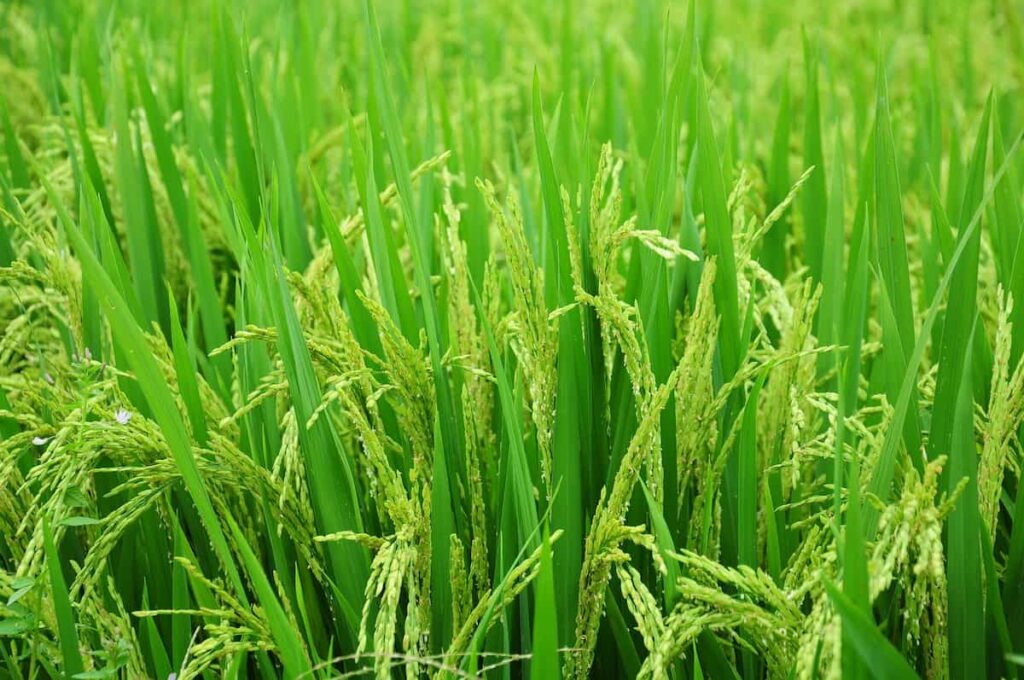
There are three seasons in which rice can be grown in India – summer, autumn, and winter. Despite this, the primary growing season for rice is the “Kharif,” also known as “winter rice.” Growing rice during this period takes place from June to July, and it is harvested between November and December. 84% of the country’s rice supplies are produced in the Kharif season.
The rabi season is the season during which rice is cultivated, called ‘summer rice.’ This rice is sown from November to February and harvested from March to June. It is estimated that 9% of the entire rice crop is grown this season. In this period, it is common for early maturing varieties to be grown.
In May, the pre-Kharif rice, also known as ‘autumn rice,’ is sown. It is also essential to consider the weather conditions and rainfall when it comes to sowing. Due to this, there may be some differences in the timing from one place to another. The harvesting of this crop usually takes place during September and October. 7% of India’s rice crop is grown this season, and short-duration varieties that mature within 90-110 days are used to cultivate this crop.
How and when to harvest paddy crop
As far as the biological cycle of rice is concerned, it ranges from 95 days (for early varieties) to almost 250 days (for late varieties) from seedlings to harvest. Harvesting of medium-maturing varieties usually takes place 120 to 150 days after sowing, depending on the variety. A grain is ready to be harvested when it takes on a yellow color and becomes hard to the touch, which is a sign that it is time to harvest it.
In case you missed it: Rice Farming Information Guide

It is essential to harvest rice crops at the right time to maximize grain quality and yields from rice crops. As a result of harvesting too early, collected grains will be immature, and as a result, they will not have a good milling recovery and will break when pressed. In contrast, when crops are harvested late, grain may fall from the panicle and cause heavy losses in the field due to falling grain from the panicle. In general, the harvest may begin when the grains are ripe at 80% to 85%, when they are a golden yellow color, or when they have become fully ripe.
The process of harvesting can either be done manually or mechanically. As part of the manual harvesting process, workers use sharp knives to collect rice plants from the rice paddies. Then, they carefully clean them and separate the damaged ones from those that are not. When harvesting is done mechanically, all operations, including cutting, threshing, and cleaning, are combined in machines that combine all the steps involved in the harvesting process.
Tips for improving paddy quality and yield
Many factors determine the final paddy quality produced at the farm. There is no doubt that good quality paddy is necessary for the best milling results, and mixing different varieties before milling should be avoided if possible. It is vital to keep in mind the following factors when determining the final quality of paddy rice:
- As much as possible, prepare the fields evenly and levelly
- It is essential to select the correct seeding date and rate when seeding
- Ensure that the crop nutrition is uniform and applied at the right time.
- Assure that the water level in the field is kept at a consistent level and that the field is drained at the appropriate time before harvesting.
- The field should be checked regularly for pests and controlled if necessary.
- Make sure that the fields are free of weeds at all times.
- Harvesting them at the correct moisture content is vital to avoid delays in the threshing and drying of grains.
In case you missed it: Pests and Diseases in Rice Farming
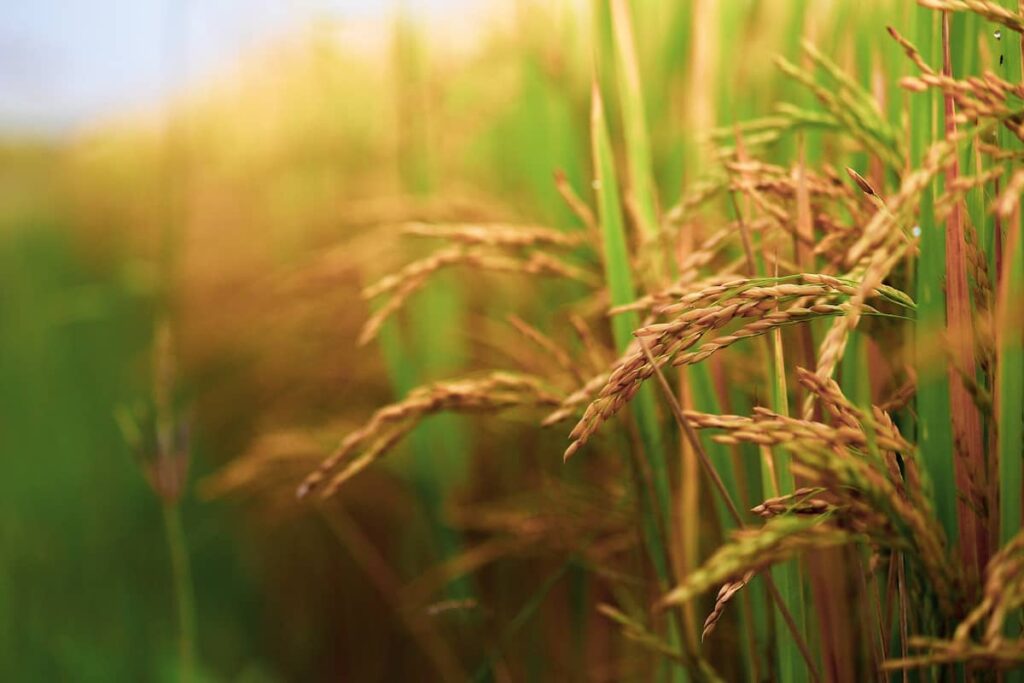
Prepare fields uniformly and as levelly as possible
Maintaining a uniform water depth throughout the growing season is essential to ensure uniform crop establishment and ripening throughout the field. It will result in more consistent moisture content in the grain, improving its quality. There is a possibility that lower areas of a field will mature sooner than higher areas of the field. Rice is prone to fissuring because of differences in grain moisture content, which can accelerate the process of grain spoilage and cause fissuring.
Select the suitable seeding date and rate
Depending on the seeding date, conditions during maturation can be affected. As a result of high temperatures after flowering, the amylose content in the plant can be lowered, and the chalkiness and gelatinization temperatures can increase. The larger the seeding rate, the higher the population of plants, the more competition for limited resources, the larger the lodging, and the smaller the grain size. If the seeding rate is reduced, there will be an increase in tillering, a more significant variation in maturity within the panicle, and a higher population of weeds.
Ensure uniform crop nutrition across the field and apply nutrition on time
If crop nutrition is uneven, it may result in a variation in tillering and tiller maturation across a field, which may result in a high degree of variation in grain moisture content at harvest. There is a strong correlation between nutrition and amylose content in head rice. There is a possibility that delayed nutrition may cause delayed growth and crop maturation, thereby increasing the probability that the crop will be adversely affected by adverse weather during the harvesting period (typhoons, rain, etc.)
In case you missed it: Common Factors That Can Improve Rice Yield Rate in the US
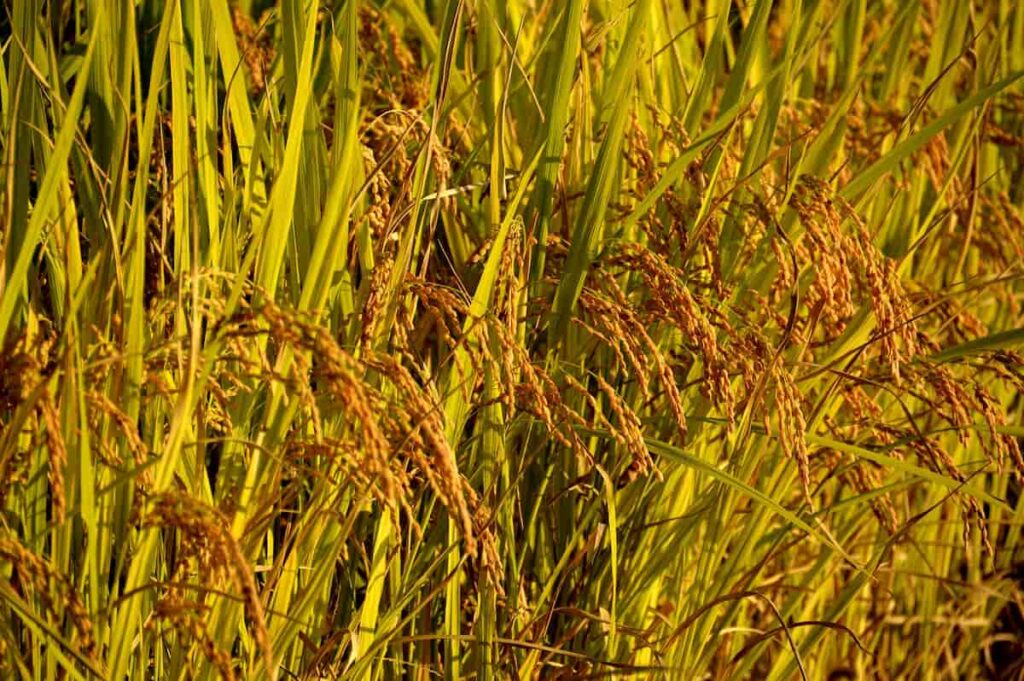
Keep a consistent water level, and drain the field at the right time before harvest
The rice plant will abort more grains and fill fewer grains during drought. It is possible to have incomplete grain filling and more misshapen kernels if grain drainage is completed too early before harvest. Rice may be harvested at an incorrect moisture content if drainage occurs too late before harvest because the field is inaccessible.
Check the field daily for pests and control pests when necessary
As a result of insects such as stink bugs and rice bugs attacking the grain during the stages of soft or hard dough, the grain may become deformed or spotty. Spotty grains result from infection by bacteria transmitted during the feeding process, which causes them to become spotty. Whiteheads are caused by stemborers and are therefore added to the harvested material to increase the amount of unfilled grain. If pesticides are applied too late on the grain, it may result in unacceptable levels of pesticide residues.
Keep the fields free of weeds
A heavy weed infestation can reduce grain quality by competing for resources with the rice, such as nutrients and sunlight, or by contaminating the rice with weed seeds with high moisture content. It is believed that the latter can transfer moisture from wet to dry grain, which can lead to fissuring.
In case you missed it: Rice Production in Myanmar; Paddy Farming In Myanmar
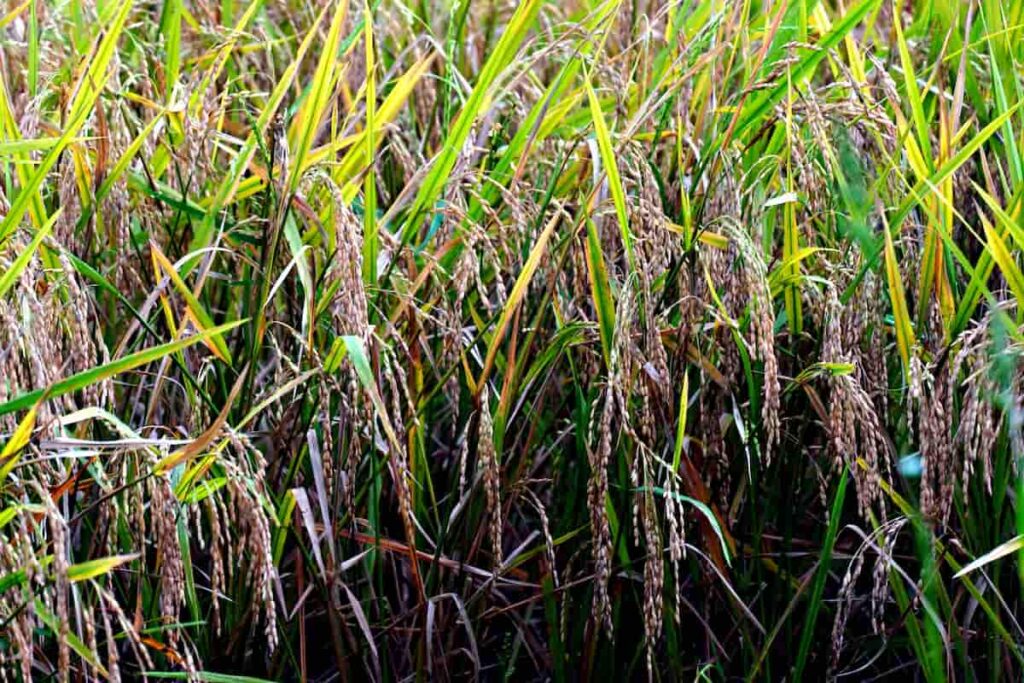
Harvest at the correct grain moisture content and avoid delays in threshing and drying
Crops should be cut at a moisture content (MC) of 20% – 25% or when 80 – 85% of the grains are straw-colored, and the grains in the lower panicle part are in the hard stage. As soon as the grain has been cut, it should be threshed and dried as soon as possible to avoid fissuring and excessive grain breakage. The correct machine settings should be used to avoid mechanical grain damage when harvesting or threshing in a stationary machine with a combined harvesting system.
Conclusion
The hybrid varieties discussed above are introduced to meet the current food requirements and overcome food shortages. By cultivating paddy with hybrid varieties, farmers gain better profits due to high yields, and the crop is resistant to diseases, thereby reducing pesticide usage.
- How to Raise Pigs in Your Own Backyard: A Comprehensive Guide
- Budget Friendly Sheep Shed Ideas: Cheap and Low-Cost Tips
- How Much Do Cattle Farmers Make: Revenue Streams in Cattle Farming
- Management Pests and Diseases in Your Cotton Field
- Sheep Farming Business Plan for Beginners
- Aquaponic Farming at Home: A Step-By-Step Guide
- Profitable Village Farming Business Ideas in 2024
- High-Yield Aquaculture: Fast-Growing Fish for Farming
- Effective Fish Pond Construction Techniques for Beginners
- Irrigation and Water Management in Pineapple Farming
- Blossom to Harvest: Mastering Flowering and Pollination in Papaya Farming
- Pig Fattening Essentials: From Selection to Sale for Beginners
- Raising Wagyu Cattle: A Complete Guide for Premium Beef Production
- Soil Types and Their Water Holding Capacity
- Optimizing Irrigation Schedules for Coconut Groves for Enhanced Yield
- Espresso Your Garden: Coffee Grounds for Healthier Acid-Loving Plants
- The Best Soil Mix for Snake Plants: How to Mix Your Own Snake Plant Soil
- Green Thumb Success: Expert Tips for Cultivating Greenhouse Beans All Year Round
- Bloom All Year Round: The Ultimate Guide to Indoor Hyacinth Care
- Eco-Friendly Gardening: How to Make Liquid Fertilizer from Kitchen Waste
- Ultimate Guide to Grow Anise in Pots: Explore Seed Propagation to Harvesting
- Guide to Raising Chester White Pigs: Discover Breed Facts to Growth Management
- Mastering the Elegance: The Ultimate Guide to Weeping Cherry Tree Care, Planting, and Maintenance
- Ultimate Guide to Planting Garlic in Grow Bags: Growing Strategies for Beginners
- How to Fix Spider Plant Leaf-Related Problems: Natural and Organic Remedies
- 10 Reasons Why Your Tulsi Plant is Shedding Leaves: Home Remedies and Solutions
- Optimizing Growth and Yield: The Advantages of Palm Bunch Ash Fertilizer
- Utilizing Neem Oil Extract as a Natural Pesticide for Hydrangea
- From Soil to Harvest: Various Ways in Which Farmers Can Use AI Tools
- Steps to Encourage and Induce Citrus Flowers: A Comprehensive Guide
- How to Fix Snake Plant Leaf-Related Issues: Natural and Organic Remedies
- Transform Your Garden into a Fragrant Oasis with Raat Ki Rani (Night Blooming Jasmine)
- Discover the Ideal Chicken Breeds for Philippine Farms
- How to Create a Poultry Egg Farm Business Plan for Profits
- Grow Lemon Cucumbers Like a Pro: Insider Techniques for Bountiful Yields
- Ultimate Guide to Caring for Your Pink Princess Philodendron: Tips for Thriving Variegation
